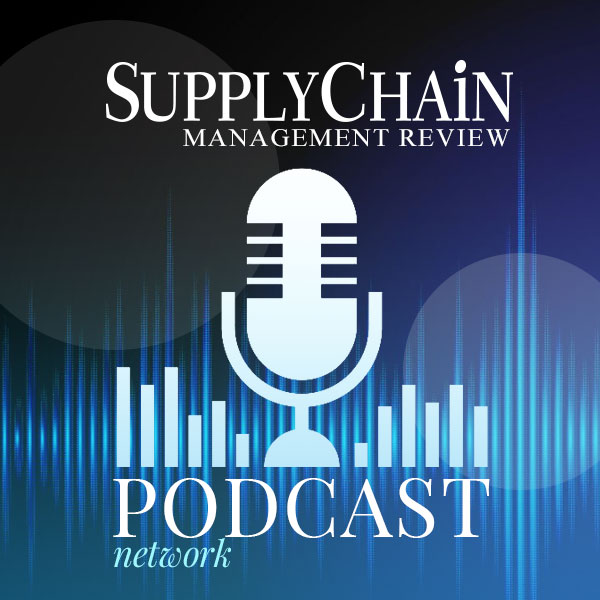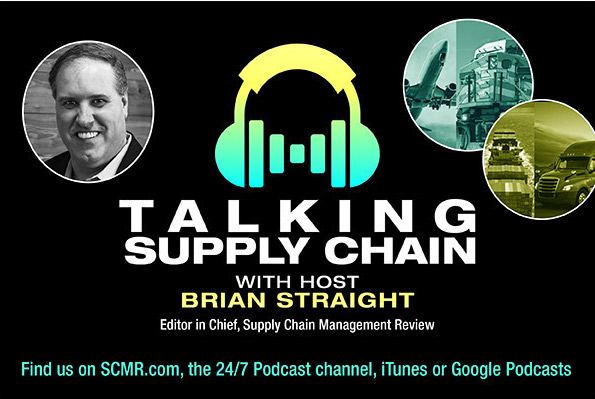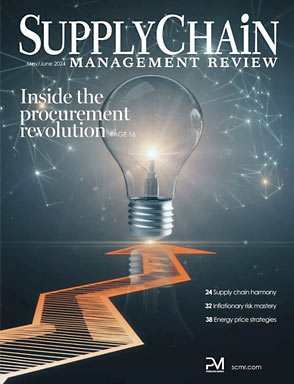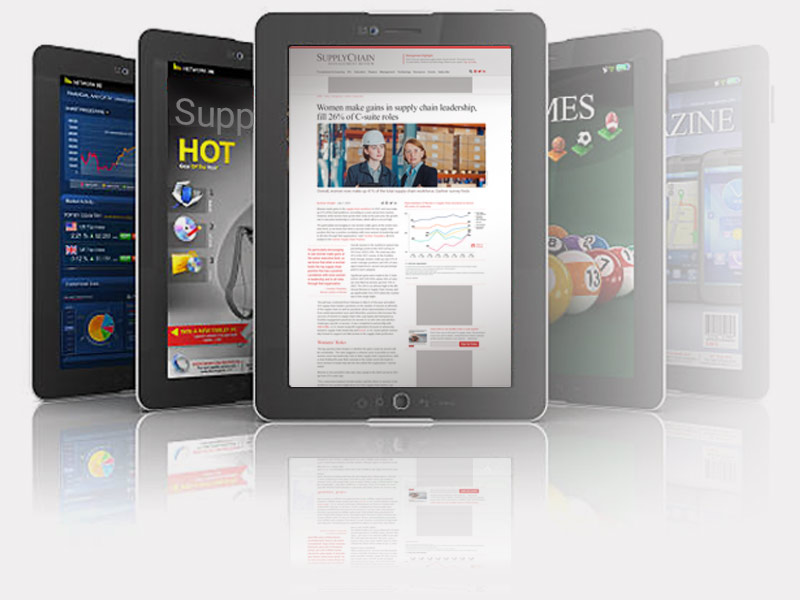In a world where data-driven decision-making is increasingly critical to supply chain resilience and agility, many global enterprises still rely on outdated processes to exchange mission-critical information with their partners. From manual data entry and spreadsheet validation to email-based submissions of forecasting data, these legacy systems introduce unnecessary delays, high operational costs, and significant risks of human error.
Yet, despite the availability of more advanced tools, the inertia of “how things have always been done” remains a formidable barrier to change. As a result, there is an enormous hidden cost borne by organizations as they struggle to reconcile inefficient internal workflows with the need for faster, more accurate supply and demand planning.
This article examines a recent process automation initiative that tackled this challenge head-on. What began as a simple improvement to an outdated partner data exchange evolved into a scalable framework replicable across industries. It’s a case study in how supply chain professionals can unlock measurable gains through targeted, technology-driven interventions and without overhauling their entire IT infrastructure.
Background: A decade-old problem
At one of the world’s leading consumer electronics firms, weekly sell-in forecasts (SIFs) were traditionally received from major distributor customers in the form of Excel files submitted via email. These files provided the partner’s demand forecasts for the manufacturer’s products, a foundational input for internal supply planning, procurement, and production scheduling.
Despite this data’s strategic importance, the process remained unchanged for over 10 years. Each week, teams manually downloaded the attachments, validated the data for completeness and format consistency, converted it to the appropriate file types, and uploaded it into internal planning systems. This repetitive and time-consuming process took an estimated 5–6 hours per week per partner.
More than just a drain on productivity, this workflow introduced compounding risks: inconsistent formatting, missed files, and human error in data entry. These problems didn’t just affect internal planning, but they also impacted downstream activities such as inventory distribution, fulfillment accuracy, and customer satisfaction.
The opportunity: Rethinking data exchange
Recognizing the inefficiencies, we proposed a transformative solution while bringing in the customer as a partner to the pilot: the goal was to replace the legacy email-based submission model with a secure, automated file transfer process using sFTP (secure file transfer protocol). This would allow partners to upload forecasting files to a centralized sFTP server from which the data could be automatically ingested, validated, and processed into the company’s planning systems, thereby eliminating the need for manual intervention.
This move would address multiple issues simultaneously:
- Speed: Removing manual handling accelerates the availability of data.
- Accuracy: Reducing touchpoints minimizes errors.
- Scalability: Once built, the framework could be extended to additional partners with minimal rework.
- Security: sFTP provides a robust, encrypted channel for data exchange, far superior to email.
Execution: From idea to implementation
The initial phase involved building the sFTP infrastructure and defining the required data structure for ingestion. The operations team collaborated closely with both internal IT and the partner’s forecasting team to standardize the formatting, naming conventions, and delivery cadence of SIF files.
The system was designed to validate incoming files automatically for required fields, data integrity, and consistency with historical trends. Once validated, the data flowed directly into internal planning systems, where it could be used in demand forecasting models, procurement decisions, and inventory planning.
The pilot launched with one of the largest national carriers, was executed smoothly, and the benefits were almost immediate. With validation automated and manual steps eliminated, forecast data was now available to planners in near real time. Time previously spent on clerical processing could now be redirected toward strategic analysis and supply risk mitigation.
Following the success of the pilot, the framework was extended to a second major partner within weeks, demonstrating the system’s scalability and adaptability. The success of these implementations paved the way for further rollouts across other partner segments and product lines.
Quantifying the impact
The initiative delivered several measurable and strategic benefits:
- Time savings: Each implementation saved approximately 250 hours annually. With two major partners onboarded, the total time savings reached 500 hours per year.
- Cost reduction: Assuming a conservative fully loaded hourly rate of $75 for the employees previously managing the manual process, the initiative resulted in $37,500 in annual savings per partner, or $75,000 across the two partners.
- Productivity gains: Supply chain and demand planning teams could now dedicate more time to value-added tasks such as scenario modeling, exception management, and strategic supplier engagement.
- Accuracy improvements: Automated file validation and ingestion removed the majority of human-induced errors, improving the integrity of forecast data and reducing the need for rework or back-and-forth communication.
- Speed and responsiveness: Forecast data was now integrated into planning systems within minutes of submission, allowing for faster decision-making and improved alignment with market demand.
Beyond execution: Why this matters to the broader industry
What makes this work particularly noteworthy is not only its success in execution but also its broad applicability. Many organizations, particularly in telecommunications, retail, and manufacturing, still rely on outdated methods for exchanging forecast and sell-in data. These manual processes are often overlooked as part of “business as usual,” despite their cost and inefficiency.
The solution offers a practical, scalable model for modernizing these interactions using secure automation without requiring a disruptive overhaul of existing infrastructure. Rather than implementing a new enterprise system or replacing core platforms, the sFTP-based approach integrates with what’s already in place, delivering improvements through better connectivity and process design.
Furthermore, this approach is fully compatible with major enterprise planning systems, such as SAP Ariba, Blue Yonder, Kinaxis RapidResponse, and Oracle SCM. The sFTP pipeline (IT integration withstanding) can feed directly into these systems, allowing for even greater automation and data continuity from external partners into the company’s internal demand planning engines.
This extensibility makes it a valuable framework not just for large enterprises but also for mid-sized firms seeking to scale their digital supply chain capabilities incrementally.
A scalable framework for industry adoption
The process improvements seen in this initiative can be adopted across various industries and organizational structures:
- Retail: Retailers and suppliers often exchange sales forecasts and replenishment data via spreadsheets or vendor portals. Automating this exchange can lead to better stock alignment and reduced shelf gaps.
- Manufacturing: Manufacturers that rely on just-in-time production can use sFTP automation to receive upstream component forecasts from suppliers, improving production scheduling and minimizing inventory holding costs.
- Consumer Packaged Goods (CPG): CPG companies exchanging promotional forecasts and sales expectations with distributors can implement similar pipelines to reduce lag and improve response times.
- Automotive: OEMs and tiered suppliers can use automated forecasting exchanges to improve transparency and reduce supply chain bullwhip effects, particularly in volatile or high-variability demand cycles.
As companies face increasing pressure to become more agile and resilient, automation of critical data flows offers a relatively low-risk, high-return improvement. By starting with high-impact, repetitive workflows like forecast ingestion, businesses can modernize incrementally while delivering measurable operational benefits.
Lessons learned
Several key takeaways from this project can inform similar efforts in other organizations:
- Start small, think big: Begin with one high-impact use case to prove the value of automation before scaling to other partners or workflows.
- Engage stakeholders early: Cross-functional collaboration was critical to success, from IT and planning teams to external partners. Alignment on data format, validation logic, and delivery cadence ensured smooth onboarding.
- Build for reusability: The architecture was designed with scalability in mind. Adding new partners required minimal changes, which sped up adoption and minimized IT overhead.
- Focus on the user experience: Although the change was technical, it was guided by a strong understanding of day-to-day user pain points. This ensured high adoption rates and internal buy-in.
Conclusion: From incremental change to strategic advantage
The successful automation of forecast data exchange using sFTP technology serves as a compelling example of how supply chain leaders can deliver an outsized impact through focused, well-executed improvements. By modernizing a single workflow, the project unlocked time savings, improved data accuracy, and enhanced decision-making capabilities, without the need for disruptive system changes or massive investments.
More importantly, it provided a repeatable framework—one that is adaptable to different industries, planning systems, and partner configurations. Whether feeding into SAP Ariba, Blue Yonder, or other planning environments, this model creates a foundation for more agile, integrated, and data-driven supply chain ecosystems.
As the complexity and pace of global supply chains continue to grow, businesses must seek every opportunity to eliminate friction and unlock value. This initiative is a powerful reminder that innovation doesn’t always mean reinvention—it often means solving old problems in smarter, faster ways.
About the Author:
Ruchi Dholakia is a strategic supply chain leader at Apple, with over 13 years of experience in end-to-end planning, operations, and partner management. Currently managing a multi-billion-dollar portfolio of Apple’s largest U.S. telecom customers, Dholakia is passionate about driving efficiency, resilience, and innovation in supply chain operations. She has been recognized for implementing technology-forward solutions, including secure file transfer protocol (SFTP)-based planning systems, and leading initiatives to integrate AI/ML for inventory optimization.
SC
MR


More Demand Forecasting
- Breaking barriers in B2B forecast sharing: How sFTP automation is reshaping supply chain data exchange
- How to improve demand forecasts for new product families
- The special demand optimization team
- How S&OP provides the answer to in-demand products
- Predicting stockouts: Enhancing FMCG resilience through data-driven insights
- More Demand Forecasting
What's Related in Demand Forecasting

 Explore
Explore
Topics
Software & Technology News
- Employee versus enterprise AI adoption
- Uber Freight’s Val Marchevsky to deliver Keynote at NextGen Supply Chain Conference
- Trust the team, win the customer
- Breaking barriers in B2B forecast sharing: How sFTP automation is reshaping supply chain data exchange
- A conversation on the life sciences supply chain with DHL’s Jim Saponaro
- Data center growth driving new logistics opportunities
- More Software & Technology
Latest Software & Technology Resources

Subscribe

Supply Chain Management Review delivers the best industry content.

Editors’ Picks




